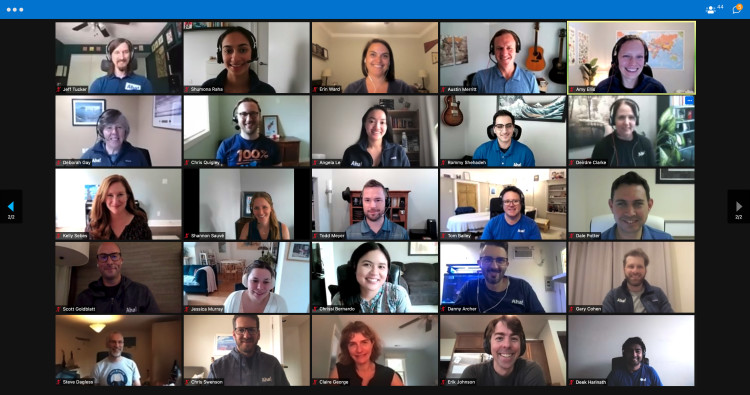
Aha! team members at a cross-functional meeting | Photo by Aha!
Transition to product management: Where do PMs come from?
Hugging and bridging. I was thinking about the interconnectedness of life's experiences — how a skill can be applied in different contexts. After doing a little research, I discovered "teaching for transfer." The idea is that you can apply existing knowledge to new situations. Hugging in this context refers to finding similarities in topics while bridging is more abstract, related to making mental leaps. Both approaches are essential if you are considering a transition into product management from another field.
Even as the discipline matures, there is no single path for most product managers — you find your way based on how you can transfer your past experiences to new scenarios.
Fortunately, you can gain some of all that regardless of where you work within a technology company — as long as you are deeply curious about the business, its products, and customers. I learned this myself after moving from marketing to product management early in my career. And I have seen countless people transition into product management from the following roles, which each bring specific benefits:
Business analyst: Analytical approach to processes
Consultant: Broad exposure to strategy and technology trends
Customer support: Empathy for solving problems
Designer: Appreciation for user experience
Marketer: Knowledge of market landscape and go-to-market strategies
Project manager: Awareness of time-management, planning, and team leadership
Salesperson: Understanding of what inspires customers to buy
Software developer: Unique perspective on how to build the product
I would also say that background is secondary. First you need to make sure product management is right for you. This is not easy work and it requires an exhaustive breadth of skills. Product managers sit at the center of technology, business, and design. So you need technical skills, leadership ability, planning prowess, and a zealous appreciation for continuous improvement.
Most product managers that I have known benefitted from access to role models in senior positions and overall good mentorship. So anytime you have an opportunity to work directly on products — take it. Share your interest with your colleagues and look for ways to contribute. Study up on product management by reading educational guides or enrolling in professional training programs. Get out there and interview — see if you can join networking events and ask the experts in your industry about their journey to product.
Getting a job in product without any product experience is not impossible. But it is not the norm. You need to understand the role, develop a product mindset, and have some practical experience. I have seen some common trajectories for folks with that foundation who move into product management from another disciple:
Shift internally
If you already work in a company that has product manager roles then you might be able to transfer. This will likely require the support of an internal advocate who is already a product leader. Express your interest and volunteer to take on any work that could help you gain hands-on skills — like user interviews or research.
Create your own de-facto role
If your organization does not have formal product manager roles then you can use that to your advantage. Accept the responsibility of acting as a product manager without the formal title. Define features, write documentation, lead sprints. Leadership through influence is a core competency for any PM and you will have many chances to practice it this way.
Look elsewhere
If there is not a path forward at your current company, you might want to explore interviewing for open roles. This can be a bit more challenging if you do not have product experience already, though. So for this third option, you may want to have some side projects or certifications that you can use to bolster your resume.
Curiosity, tenacity, and resiliency will be critical as you move into product management — no matter where you come from or which path you choose.
Your past experiences will help you to be a more perceptive product leader. Allow that to shape where you and your product are headed. Your journey might not look like everyone else's and that is a good thing. Breakthroughs are rarely the result of conformity.
And remember that your value as a product leader will be measured by how well you build others into great leaders themselves. So once you advance to a more senior role, look back at where you came from and see how you can pay those gifts forward.
What do you think is most important for transitioning to a new role?
Build better products with Aha! — sign up for a free 30-day trial.




